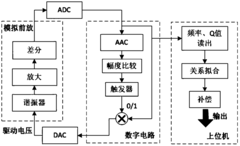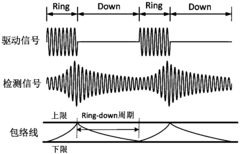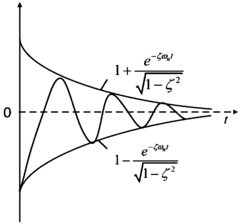Improving The Resolution Of Temperature Sensors - Eureka
OCT 10, 20244 MIN READ
Generate Your Technical Report in Patsnap Eureka
AI-Powered Innovation Solution Platform for R&D
Temperature Sensor Resolution Goals and Challenges
The primary objective is to explore and analyze the current state, challenges, and future development trends of temperature sensor resolution enhancement technologies. This involves comprehensively evaluating the existing technical solutions, identifying key bottlenecks and limitations, and assessing the geographical distribution of relevant research and development activities.
Additionally, it is crucial to examine the critical milestones and breakthroughs that have shaped the evolution of this technology over time. By understanding the technological progression and the underlying principles driving advancements in temperature sensor resolution, potential innovative directions and promising research avenues can be identified to guide future efforts in overcoming current challenges and achieving higher resolution capabilities.
Additionally, it is crucial to examine the critical milestones and breakthroughs that have shaped the evolution of this technology over time. By understanding the technological progression and the underlying principles driving advancements in temperature sensor resolution, potential innovative directions and promising research avenues can be identified to guide future efforts in overcoming current challenges and achieving higher resolution capabilities.
Market Demand for High-Resolution Temperature Sensors
- Increasing Demand
The market for high-resolution temperature sensors is growing rapidly due to the need for precise temperature monitoring and control in various industries, such as healthcare, manufacturing, and scientific research. - Industrial Applications
High-resolution temperature sensors are crucial in industrial processes that require precise temperature control, such as semiconductor manufacturing, chemical processing, and food production. - Healthcare and Life Sciences
In the healthcare and life sciences sectors, high-resolution temperature sensors are essential for monitoring patient body temperature, maintaining optimal conditions for medical equipment and laboratory instruments, and ensuring the stability of temperature-sensitive materials. - Environmental Monitoring
Environmental monitoring applications, such as climate research, weather forecasting, and ecological studies, rely on accurate temperature measurements, driving the demand for high-resolution temperature sensors. - Emerging Technologies
The development of emerging technologies, such as the Internet of Things (IoT), wearable devices, and smart home systems, has created new opportunities for high-resolution temperature sensors in various consumer and industrial applications.
Current State and Limitations of Temperature Sensors
- Limited Accuracy Current temperature sensors have limited accuracy, with typical errors ranging from ±0.1°C to ±1°C, depending on the sensor type and operating conditions.
- Sensitivity to Environmental Factors Temperature sensors can be affected by various environmental factors, such as humidity, pressure, and electromagnetic interference, which can introduce measurement errors.
- Slow Response Time Some temperature sensors, particularly those based on thermocouples or resistance temperature detectors (RTDs), can have relatively slow response times, limiting their ability to detect rapid temperature changes.
- Limited Operating Range Different temperature sensor technologies have different operating temperature ranges, and some may not be suitable for extreme temperature environments or applications that require a wide measurement range.
- Stability and Drift Issues Over time, temperature sensors can experience drift, where their output gradually shifts away from the true temperature value, affecting measurement accuracy and requiring periodic recalibration.
Evolution of Temperature Sensing Technologies

Existing Solutions for Enhancing Temperature Sensor Resolution
01 High Spatial Resolution Fiber Optic Temperature Sensors
Utilizing optical fibers to measure temperature with high spatial resolution, enabling precise temperature mapping along the fiber length. Applications include monitoring industrial processes, infrastructure, and environmental monitoring.- High Spatial Resolution Fiber Optic Temperature Sensors: These sensors utilize optical fibers to measure temperature with high spatial resolution, allowing for precise temperature mapping along the length of the fiber. They can be used for various applications, such as monitoring temperature in industrial processes, infrastructure, and environmental monitoring.
- High-Resolution Infrared Thermography and Thermal Imaging: These techniques involve the use of infrared cameras or detectors to capture high-resolution thermal images or temperature maps. They can provide detailed temperature distributions and are useful for applications such as non-destructive testing, medical imaging, and industrial monitoring.
- High Spatial and Temporal Resolution Temperature Reconstruction: These methods aim to reconstruct temperature data with high spatial and temporal resolution, often by combining data from multiple sources or using advanced algorithms. They can provide detailed temperature information for applications such as weather forecasting, climate modeling, and urban heat island studies.
- High-Resolution Temperature Sensing for Microscopic and Biological Applications: These techniques involve the development of temperature sensors with high resolution for measuring temperature at the microscopic scale or in biological systems. They can be used for applications such as monitoring temperature in microelectronic devices, studying biological processes, and medical diagnostics.
- High-Resolution Optical Fiber Temperature Sensing Systems: These systems utilize advanced optical fiber technologies, such as Raman scattering or Brillouin scattering, to achieve high spatial resolution temperature measurements along the length of the fiber. They can be used for various applications, including structural health monitoring, geothermal exploration, and industrial process monitoring.
02 High Resolution Infrared Thermography and Thermal Imaging
Using infrared cameras or sensors to capture high-resolution thermal images or temperature maps. Applications include industrial inspection, medical diagnostics, and environmental monitoring, providing detailed temperature information.03 High Resolution Temperature Sensors for Microscopic and Biological Applications
Designed to measure temperature with high resolution at the microscopic scale, enabling temperature monitoring in electronic devices, biological samples, and other small-scale systems. Applications in microelectronics, biomedical research, and material science.04 High Resolution Distributed Optical Fiber Temperature Sensing Systems
Employing advanced techniques like Raman or Brillouin scattering to measure temperature along the entire length of an optical fiber with high spatial resolution. Applications include monitoring power cables, pipelines, and structural health.05 High Resolution Temperature Data Reconstruction and Downscaling Methods
Involving algorithms and techniques to reconstruct or downscale temperature data from lower resolution sources to obtain high-resolution temperature maps or datasets. Applications in remote sensing, meteorology, and urban heat island studies.
Key Players in Temperature Sensor Industry
The competition landscape for improving temperature sensor resolution involves established companies and research institutions. The industry is mature with significant market size, driven by demand across sectors like industrial automation, healthcare, and consumer electronics. Key players include Endress+Hauser, ABB, and Yokogawa, offering advanced technologies. Research institutions like MIT and Shandong University contribute to ongoing innovation. The technology maturity is high, with continuous improvements and occasional breakthroughs from corporate R&D and academic research.
Endress+Hauser Gmbh+Co KG
Technical Solution: Endress+Hauser focuses on high-precision temperature sensors with advanced signal processing algorithms for enhanced resolution. Their robust sensors are designed for industrial applications, offering reliable performance in harsh environments with digital communication protocols for accurate data transmission.
Strength: High precision and robust design. Weakness: Higher cost compared to simpler sensors.
ABB Group
Technical Solution: ABB offers temperature sensors with integrated microcontrollers for real-time data analysis to improve resolution. Their sensors are widely used in automation and control systems, providing reliable and accurate temperature measurements with an emphasis on energy efficiency and long-term stability.
Strength: Real-time data analysis and energy efficiency. Weakness: Complexity in integration with existing systems.
Core Innovations in Temperature Sensing
Resonant-mode sensor temperature compensation method based on continuous ring-down
PatentActiveCN108827346A
Innovation
- By building a continuous ring-down test system, measuring the ring-down time, characterizing the Q value, and using the Q value to linearly fit the frequency, the frequency change caused by the temperature error is obtained, thereby compensating the resonator temperature. This method does not require an additional temperature sensor, saving cost and power consumption, while improving the stability of the resonator and the accuracy of Q value measurement
- This method also uses a frequency counter based on the reset counter principle to reduce quantization noise
Regulatory Landscape for Temperature Sensors
Temperature sensor resolution improvement is a crucial area of research, driven by the increasing demand for precise temperature measurements across various industries. This technology aims to enhance the accuracy and sensitivity of temperature sensors, enabling more reliable and efficient monitoring and control systems.
The market demand for high-resolution temperature sensors is significant, spanning sectors such as industrial automation, healthcare, environmental monitoring, and scientific research. Improved resolution can lead to better process control, energy efficiency, and safety measures, ultimately driving cost savings and operational excellence.
Current state-of-the-art temperature sensor technologies face challenges in achieving higher resolutions due to limitations in materials, fabrication processes, and signal processing techniques. Overcoming these challenges requires innovative approaches in areas such as nanomaterials, micro-electromechanical systems (MEMS), and advanced signal processing algorithms.
the structure of the environmentally friendly knitted fabric provided by the present invention; figure 2 Flow chart of the yarn wrapping machine for environmentally friendly knitted fabrics and storage devices; image 3 Is the parameter map of the yarn covering machine
Login to View More Environmental Impact of Advanced Temperature Sensors
Temperature sensor resolution improvement is a crucial area of research, driven by the increasing demand for precise temperature measurements across various industries. This technology aims to enhance the accuracy and sensitivity of temperature sensors, enabling more reliable and efficient monitoring and control systems.
The market demand for high-resolution temperature sensors is significant, spanning sectors such as industrial automation, healthcare, environmental monitoring, and scientific research. Improved resolution can lead to better process control, energy efficiency, and safety measures, ultimately driving cost savings and operational excellence.
Current state-of-the-art temperature sensor technologies face challenges in achieving higher resolutions due to limitations in materials, fabrication processes, and signal processing techniques. Overcoming these challenges requires innovative approaches in areas such as nanomaterials, micro-electromechanical systems (MEMS), and advanced signal processing algorithms.
the structure of the environmentally friendly knitted fabric provided by the present invention; figure 2 Flow chart of the yarn wrapping machine for environmentally friendly knitted fabrics and storage devices; image 3 Is the parameter map of the yarn covering machine
Login to View More If you want an in-depth research or a technical report, you can always get what you want in Patsnap Eureka TechResearch . Try now!



